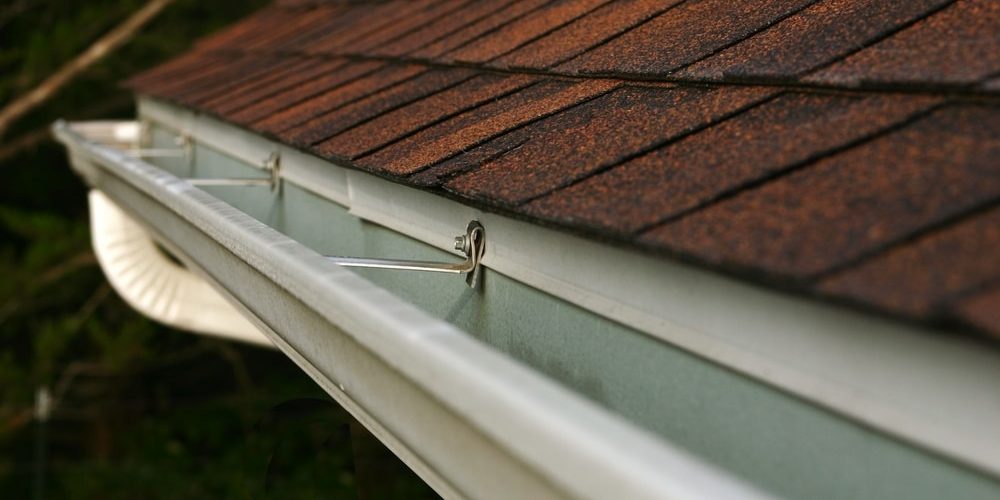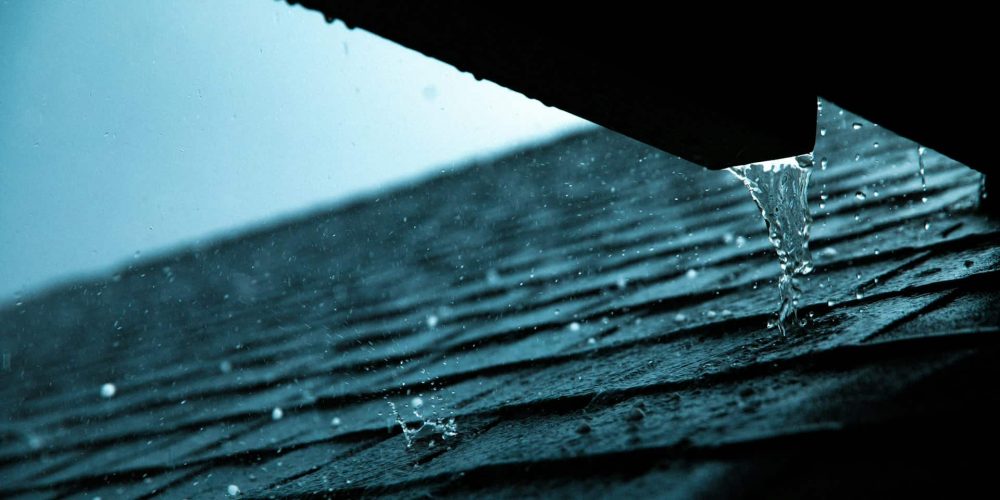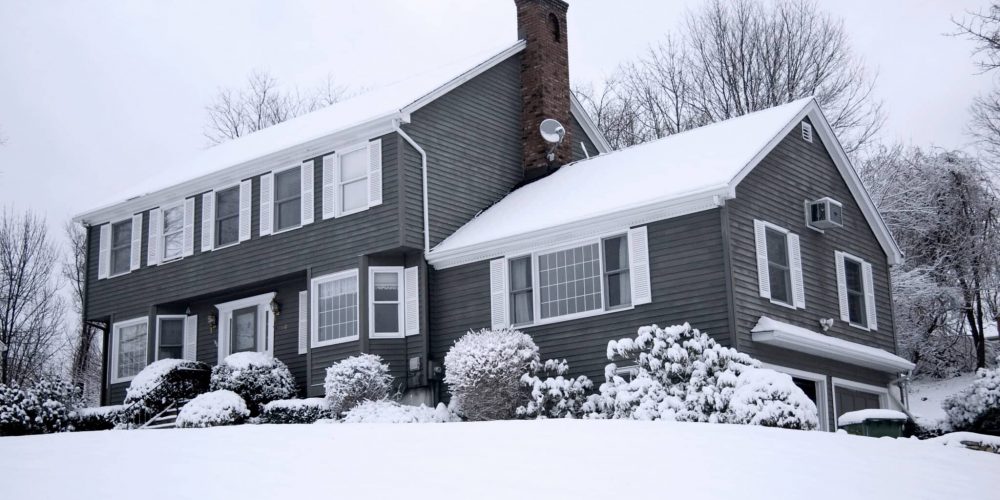When gutters get clogged with leaves, twigs, and other debris, water can overflow and cause damage to your home’s foundation, roof, and walls. That’s why it’s essential to clean your gutters after a heavy rainstorm.
Whether you’re a seasoned homeowner or a first-time gutter cleaner, keep reading to learn how to best clean gutters after a heavy rain storm and protect your home from water damage.
5 Steps to Follow to Clean Gutters After a Heavy Rain Storm
Cleaning gutters after a heavy rainstorm is an essential task to ensure the smooth flow of rainwater away from your home’s foundation.

#1. Safety First
Safety is crucial when cleaning gutters, as it involves working at heights and dealing with potentially hazardous debris.
Follow these tips to keep yourself safe when cleaning gutters:
- Use a sturdy ladder: Make sure your ladder is in good condition and rated to support your weight. Set the ladder on a flat surface and secure it against the house to prevent it from slipping or wobbling.
- Wear gloves: Gloves protect your hands from sharp debris and bacteria that may be present in the gutters.
- Wear sturdy shoes: Wear shoes with good traction and support to prevent slips and falls.
- Use a safety harness: If you’re working on a particularly high roof or feel uncomfortable on a ladder, consider using a safety harness for added protection.
- Avoid overreaching: Move the ladder frequently and avoid overreaching to prevent the ladder from tipping over.
- Have someone assist you: Have someone hold the ladder and pass tools to you to make the process safer and more efficient.
By following these few safety tips, you can minimize the risks associated with cleaning gutters and ensure a safe and successful cleaning experience.
#2. Remove Debris
When removing debris from gutters, be sure you:
- Use a small hand shovel or scoop: A small hand shovel or scoop can help you remove debris more easily and effectively than just using your hands.
- Start at the downspout: Start cleaning the gutters at the downspout and work your way toward the end of the gutter. This will help prevent clogs and ensure that water can flow freely.
- Dispose of debris properly: Dispose of the debris in a yard waste bag or compost pile. Avoid throwing debris onto the ground or into the street, as this can create a hazard for pedestrians and drivers.
- Be thorough: Make sure to remove all debris from the gutters, including small twigs and leaves. This will help prevent future clogs and ensure that water can flow freely.
- Check for signs of pests: Look for signs of pests, such as rodent droppings or nests. If you suspect that pests are living in your gutters, contact a pest control professional to address the issue.

#3. Flush the Gutters
Use a garden hose to flush out any remaining debris from the gutters. Start at the downspout and work your way toward the end of the gutter. This will also help to identify any clogs or blockages in the downspout.
With these tips you’ll be flushing your gutters out in no time:
- Use a garden hose with a high-pressure nozzle: A garden hose with a high-pressure nozzle can help to dislodge any remaining debris from the gutters.
- Start at the downspout: Start flushing the gutters at the downspout and work your way toward the end of the gutter. This will help to prevent clogs and ensure that water can flow freely.
- Check for clogs: While flushing the gutters, keep an eye out for any clogs or blockages in the downspout. If you notice a clog, use a plumbing snake or a plumber’s auger to remove it.
- Test the flow: Once you’ve finished flushing the gutters, test the flow by pouring water into the gutters from a bucket or a hose. If the water flows freely, you’re done. If not, you may need to repeat the cleaning process or address any underlying issues, such as a damaged gutter or downspout.
#4. Check For Damage
Checking for damage is an important step in the gutter cleaning process, as it allows you to identify and address any issues that could cause water damage to your home.
Use these tips to guide you when checking for damage to your gutters after a heavy rain storm:
- Look for cracks or holes: Inspect the gutters for cracks, holes, or other signs of damage. These can allow water to leak out of the gutters and cause damage to your home’s foundation, roof, or walls.
- Check for rust or corrosion: Check for rust or corrosion on metal gutters. This can weaken the gutters and make them more susceptible to damage.
- Inspect the downspouts: Inspect the downspouts for damage or blockages. A damaged or clogged downspout can cause water to back up in the gutters and overflow, causing damage to your home.
- Tighten loose screws or brackets: If you notice any loose screws or brackets, tighten them to ensure that the gutters are securely fastened to your home.
- Replace damaged sections: If you notice any significant damage to the gutters, such as large cracks or holes, replace the damaged sections to ensure that the gutters are functioning properly.
By checking for damage, you can identify and address any issues that could cause water damage to your home. Regular maintenance and repair of gutters can help prevent costly water damage and ensure that your home is protected from the elements.

#5. Prevent Clogging by Installing Gutter Guards
Consider installing gutter guards to prevent debris from accumulating in the gutters and reduce the frequency of cleaning.
Gutter guards can be a great addition to your gutters, as they help to prevent debris from entering and clogging the gutters.
Installing gutter guards the right way:
- Choose the right type of gutter guard: There are several types of gutter guards available, including mesh, foam, and brush guards. Choose the type that best suits your needs and budget.
- Clean the gutters before installation: Before installing gutter guards, it’s important to clean the gutters thoroughly to ensure that no debris or buildup could interfere with the installation.
- Measure and cut the guards: Measure the length of each section of the gutter and cut the guards to size using a pair of scissors or a utility knife.
- Install the guards: Slide the gutter guards into place and secure them using the manufacturer’s recommended method. This may involve snapping them onto the gutter, screwing them into place, or using adhesive.
- Test the guards: Once the gutter guards are installed, test them by flushing water through the gutters. Make sure that water is flowing freely and that the guards are effectively preventing debris from entering the gutters.
Regular cleaning and maintenance of gutters are essential to prevent water damage to your home’s foundation, roof, and walls. It’s recommended to clean gutters at least twice a year, in the spring and fall, and after any heavy rainstorms.
By installing gutter guards, you can help prevent clogs and ensure that your gutters are functioning properly. While gutter guards can be a great investment, it’s important to remember that they still require regular maintenance and cleaning to ensure that they’re working effectively.
Let Us Help You with Your Gutters
We understand that cleaning gutters after a heavy storm isn’t easy and not everyone wants to do it. At Waddle Exteriors, we offer gutter cleaning, installation, and repairs. Let us help you clean out the storm debris so you can focus on the things you enjoy. Contact one of our professionals today and let their experience handle the dirty work.





